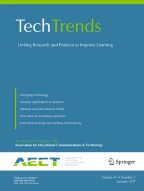Explore related subjects
Discover the latest articles, news and stories from top researchers in related subjects.References
Allen, N., Christal, M., Perrot, D., Wilson, C., Grote, B.,& Earley, M. A. (1999). American Indian schools move into the new millennium.Educational Leadership, 56(7), 71–74.
Allen, N.J. & Crawley, F.E. (1998). Voices from the Bridge: Worldview Conflicts of Kickapoo Students of Science.Journal of Research in Science Teaching; 35 (2). 111–32.
Electronic Emissary Web site:http:// emissary.ots.utexas.edu/emissary/ index.html, May 2001.
The Electronic Mentor Web site:http : / / www.tapr.org/ 4d/, May 2001.
Gay, G. (2000).Culturally responsive teaching: Theory, re- search & practice. New York: Teachers College Press.
Mander, J. (1991).In the absence of the sacred. San Francisco: Sierra Club Books
Pewewardy, C. (1999). Culturally responsive teaching for American Indian students. In E. R. Hollins & E.I. Oliver (Eds.),Pathways to Success in School: CukuraRy Responsive Teaching (pp. 85–100). Mahwah, NJ: Lawrence Erlbaum
Stokes, S.M. (1997, April). Curriculum for American Indian students: Using American Indian values.Reading Teacher, 50(7) 576–84.
Tharp, R. G., & Yamauchi, L. A. (1994).Effective instructional conversation in American Indian classrooms. Santa Cruz, CA: The National Cen- ter for Research on Cultural Diver sity and Second Language Learning.
The Four Directions Project Web site:http://www.4directions.org
The Virtual Tour of the National Museum of the American Indian:http:// www.conexus.si.edu/VRTour May 2001.
Rights and permissions
About this article
Cite this article
Allen, N., Resta, P.E. & Christal, M. The role of technology in native american schools. TECHTRENDS TECH TRENDS 46, 50–55 (2002). https://doi.org/10.1007/BF02772078
Published:
Issue Date:
DOI: https://doi.org/10.1007/BF02772078
